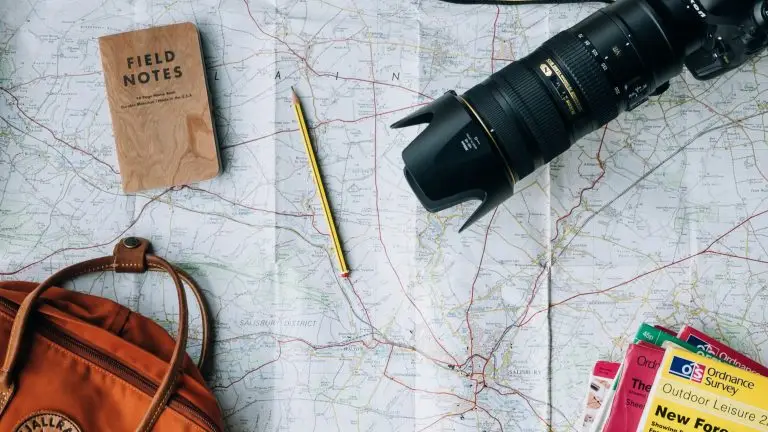Laos is a landlocked country located in Southeast Asia, bordered by Thailand, Cambodia, Vietnam, China, and Myanmar. It has a population of approximately 7 million people and is known for its stunning natural beauty, including lush forests, winding rivers, and majestic waterfalls.
The country has a rich history that dates back thousands of years, with influences from various Southeast Asian cultures, as well as French colonialism. Laos gained independence from France in 1953 and has since undergone significant political and economic changes.
Laos is home to many different ethnic groups, including Lao, Khmu, Hmong, and other minority groups. The country’s culture is characterized by traditional practices, such as Buddhist rituals, weaving, and rice farming.
Laos has a rich culinary tradition, with dishes featuring fresh herbs, vegetables, and spices. Sticky rice is a staple food in Laos, and the country is also famous for its spicy papaya salad (tam mak hoong) and beef noodle soup (khao soi).
“The Coroner’s Lunch” is a mystery novel set in 1970s Laos that follows Dr. Siri Paiboun, a 72-year-old physician and reluctant national coroner who investigates a series of suspicious deaths in the country’s capital, Vientiane, using his intuition and ingenuity to navigate the complex political and social landscape of post-colonial Laos.
“Lost in Yaba: Down and Out in Laos” is a memoir that tells the story of Doug E. Jones’ experiences living in impoverished neighborhoods in Laos in the early 1990s. Jones struggled to make ends meet and became involved in the local drug trade, leading to imprisonment and a harrowing escape from Laos.
“Thirty-Three Teeth” is a mystery novel that follows Dr. Siri Paiboun, a reluctant national coroner in 1970s Laos, as he investigates a series of mysterious deaths in Vientiane. The book is filled with humor, heart, and historical detail.
“Disco for the Departed” is a mystery novel that follows Dr. Siri Paiboun, a national coroner in 1970s Laos, as he investigates the death of a prominent figure in the country’s communist party, uncovering a web of political intrigue and corruption. The book is filled with humor, heart, and historical detail.
“Run Me to Earth” is a novel written by Paul Yoon. The book tells the story of three teenagers – Alisak, Prany, and Noi – living in Laos during the 1960s. The three friends work together in the city of Vientiane to help care for wounded soldiers and civilians during the escalating conflict in Southeast Asia. However, as the war intensifies and the political situation becomes more volatile, the friends are forced to flee the city and go into hiding. The novel follows their individual journeys as they struggle to survive and find their way back to each other. “Run Me to Earth” is a powerful story of love, loss, and resilience in the face of overwhelming adversity, set against the backdrop of a pivotal moment in Southeast Asian history.
“The Rocket” is a drama film that tells the story of a young boy named Ahlo, who is believed to bring bad luck to his community due to his twin brother’s death. Ahlo sets out on a journey with his family and friends to find a new home and build a giant rocket in the hope of winning a rocket festival competition and proving himself to his community. Along the way, they encounter various challenges and obstacles, including a group of unexploded bombs left over from the Vietnam War. The movie explores themes of family, identity, and the resilience of the human spirit in the face of adversity.
Dearest Sister” is a horror-drama film from Laos, directed by Mattie Do. The film follows a young woman named Nok who travels from her village to the capital city to take care of her cousin, Ana, who is suffering from a mysterious illness that causes her to go blind. As Nok becomes increasingly entangled in Ana’s privileged and isolated world, she begins to experience eerie and unexplainable visions that seem to be connected to her cousin’s deteriorating health. The film explores themes of class divide, family dynamics, and the supernatural.
“The Unseen River” is a 2020 documentary film directed by Pham Ngoc Lan. The movie explores the daily lives and traditions of the people living along the Red River in Vietnam. It showcases the relationship between the river and the community, and how it has shaped their culture and identity. The documentary is a poetic and contemplative journey, with stunning visuals and ambient sounds, that offers a unique perspective on the river and its people.
“The Long Walk” is a co-production between Laos and Singapore, directed by Mattie Do. The film is a drama about an old man named Mr. Oun who embarks on a long journey to find a rare flower that he believes will bring him immortality. Along the way, he is joined by a young orphan boy named Sai, and the two form an unlikely bond as they navigate the challenges of their journey together. While the film was shot in Laos and features a Lao cast, it was produced with the support of Singaporean filmmakers and funding.
“Sabaidee Luang Prabang” is a Laotian comedy-drama movie released in 2008. The movie follows a young photographer named Bangkok, who travels to the ancient city of Luang Prabang in Laos to take pictures for a travel magazine. There he meets a local girl named Noi, and they quickly fall in love. However, their relationship is challenged by cultural differences and the disapproval of Noi’s family. The movie explores themes of love, family, and cultural identity, and features stunning visuals of the historic city of Luang Prabang.
Laos has a rich musical tradition that is deeply rooted in its history and diverse ethnic groups. Traditional Lao music includes a variety of genres, such as folk music, classical music, and religious music.
The most popular traditional instrument in Lao music is the khene, a bamboo mouth organ that is often played in combination with other traditional instruments like the saw (fiddle), kong wong (large gongs), and chap (small cymbals). Lao traditional music also features a unique vocal style in which the singer uses a high-pitched falsetto.
In addition to traditional music, Laos has a growing contemporary music scene, with artists experimenting with new sounds and styles. Contemporary Lao music draws influences from various genres, such as pop, rock, hip hop, and electronic music, while still incorporating traditional elements.
Laos is also home to many music festivals, such as the That Luang Festival and the Vientiane International Music Festival, which showcase traditional and contemporary Lao music and culture. Overall, Laos’ music scene is diverse, innovative, and reflects the country’s rich cultural heritage.

